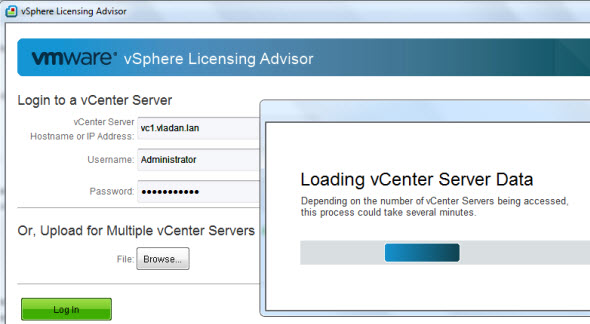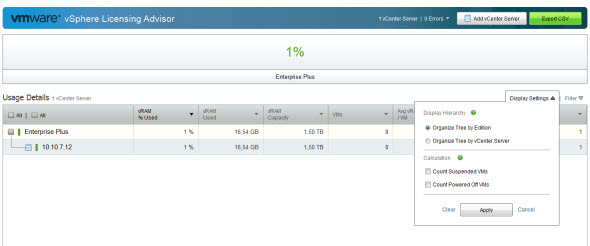The official release of vSphere Licensing Advisor Tool.
At first, when the new licensing of vSphere 5 has been announced, there was Alan Renouf's PowerCLI script available about checking on about the vRAM compliance. It's because the Official vSphere Licensing Advisor Tool was still under development. It was an independent company which was contracted by VMware for the development of the tool and which did not make it for the deadline….
It all happens during the worst period for VMware, because they actually announced the vRAM entitlements which has been originally very low, and everyone was just ……. disappointed with that. Now when ‘the storm is over', the vRAM entitlements has been raised to acceptable level (even for the Free ESXi Hypervisor… ) and so the Official Tool is now available.
Let me just quickly post a quick recapitulation of the vRAM entitlements if anyone just did not checked yet. As you can see on the image below. As for the Free VMware ESXi Hypervisor, the amount of vRAM entitlement has been raised from 8 to 32 Gigs of RAM.

The Official vSphere Licensing Advisor Tool is compatible with vSphere 4.1, vSphere 4.0 and Virtual Infrastructure 3.5 environments and helps you to calculate and understand the vRAM usage and vRAM capacity before you upgrade to vSphere 5.0.
Now how and where to get the Official vSphere Licensing Advisor tool:
01. Download and install the tool.
Prerequisites: You'll need a JRE 1.6
A quick question which one might ask is concerning the linked Mode execution of vCenter server….
Q: Does the tool take vCenter Server Linked Mode into account?
A: While vRAM is pooled across multiple linked vCenter Servers, the tool must connect to each vCenter Server in a linked group. The tool will calculate vRAM usage for each edition as if all vCenter Servers with that edition are linked together. The tool also calculates the usage for each edition for each individual vCenter Server.
VMware vSphere 5.0 Licensing, Pricing and Packaging whitepaper.
02. Connect to your vCenter server by specifying the IP address or FQDN.

03. And you should see a screen like this one. As you can see, you can change some display settings to count suspended or non powered VMs.

As you can see it's easy to use. The tool displays vRAM usage and capacity at the single point in time the data is gathered. So if you for example power Off some VMs you won't see the changements in real time, but you must close the tool and start and log in once more to see the changes you've made.
Enjoy.. -:)
